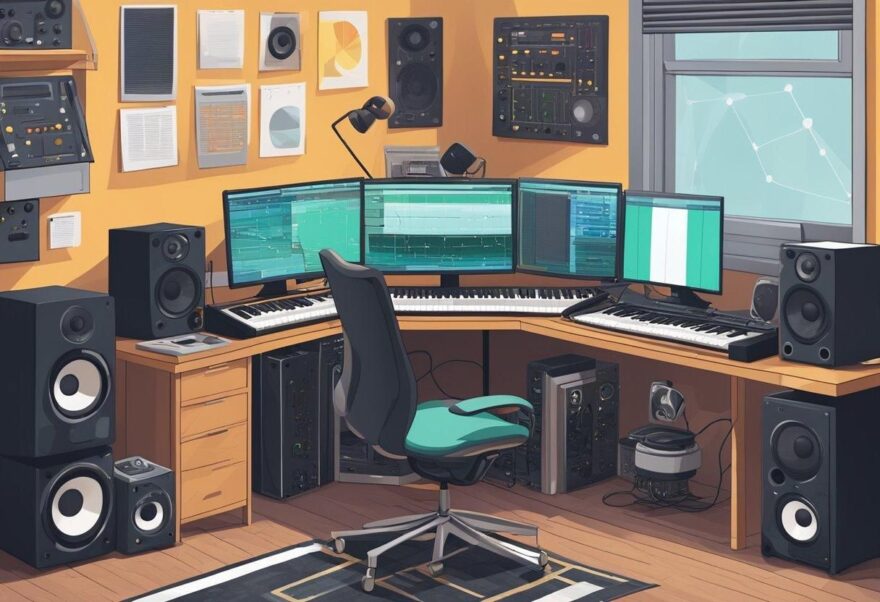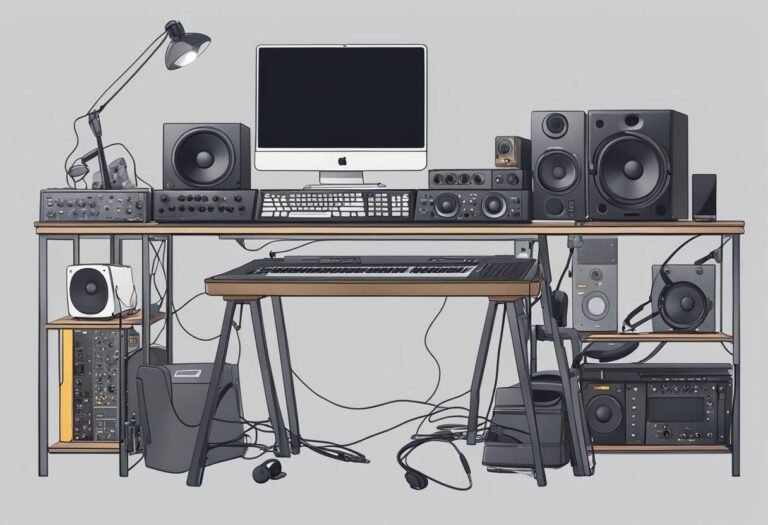The beginner’s guide to electronic music production is a comprehensive resource offering a thorough introduction to the fundamentals of electronic music production. Tailored for beginners, the guide covers essential concepts, techniques, and tools in the field, spanning from basic sound design to the application of effects plugins and mixing strategies.
Electronic music production is a fascinating art form that has been gaining popularity over the years. It is a complex process that requires knowledge of various software, hardware, and techniques. For beginners, electronic music production can seem overwhelming, but it can be an enjoyable and rewarding experience with the right guidance from https://howtomakeelectronicmusic.getlearnworlds.com.
Its structured format ensures ease of comprehension, providing step-by-step instructions, tips, and tricks to facilitate self-paced learning. By the guide’s conclusion, beginners will have acquired a strong foundational knowledge, enabling them to progress and evolve as electronic music producers.
Setting Up Your Studio
When starting out in electronic music production, setting up your studio can seem like a daunting task. However, with the right equipment and software essentials, you can create a setup that suits your needs and budget.
Choosing the Right Equipment
The first step in setting up your studio is choosing the right equipment. This includes a computer, digital audio workstation (DAW), MIDI controller, headphones, studio monitors, and an audio interface.
When choosing a computer, it is important to consider the specifications needed for electronic music production. A Mac or PC with a minimum of 8GB of RAM is recommended, with a faster processor for more complex projects.
The DAW is the heart of your electronic music production setup. Popular options include Ableton Live, FL Studio, Logic Pro, and Reason. Each DAW has its own strengths and weaknesses, so it is important to research and choose the one that best suits your needs.
A MIDI controller is a device that allows you to control your DAW and other software instruments. It is important to choose a MIDI controller that has enough keys and knobs to suit your needs.
Headphones and studio monitors are essential for monitoring your music. It is important to choose headphones and monitors that accurately represent the sound of your music.
Finally, an audio interface is necessary for connecting your studio monitors and other equipment to your computer. It is important to choose an audio interface that has the necessary inputs and outputs for your setup.
Software Essentials
In addition to the hardware, there are several software essentials that are necessary for electronic music production. These include plugins, samples, and virtual instruments.
Plugins are software that can be added to your DAW to add new sounds and effects. There are many free and paid plugins available, so it is important to research and choose the ones that best suit your needs.
Samples are pre-recorded sounds that can be used in your music. There are many free and paid sample packs available, so it is important to choose the ones that best suit your music style.
Virtual instruments are software versions of traditional instruments, such as synthesizers and drum machines. There are many free and paid virtual instruments available, so it is important to choose the ones that best suit your music style.
The Production Process
When it comes to electronic music production, crafting your first track can be both exciting and daunting. However, with the right tools, skills, and methods, anyone can create a professional-sounding song. This section will cover the basics of the production process, including recording, arrangement, effects, sound design, and more.
Crafting Your First Track
To begin, it’s essential to understand the structure of a song. Electronic music typically follows a specific structure, including an intro, verse, chorus, bridge, and outro. Once you understand this structure, you can start creating your melody, chords, bass, and drums.
Using a Digital Audio Workstation (DAW) is essential for music production. This software allows you to record, arrange, and edit your music. There are many powerful DAWs to choose from, including Ableton Live, Logic Pro, and FL Studio.
Once you have your basic track, it’s time to add effects, synths, and other sound design elements. This is where you can get creative and experiment with different sounds and textures to make your track stand out.
Mixing and Mastering Basics
After you’ve created your track, it’s time to mix and master it. Mixing involves adjusting the volume, balance, and dynamic of each element in your track to create a cohesive sound. EQ, reverb, compression, and delay are some of the tools you can use to achieve this.
Mastering involves applying the final touches to your track to make it sound polished and professional. This includes adjusting the overall volume, balance, and dynamic of the track and adding any final effects.
Conclusion

In summary, electronic music production offers a fulfilling and enjoyable experience for beginners, provided they have the essential equipment, including a computer, DAW, MIDI controller, and speakers.
Choosing the right DAW tailored to one’s needs is crucial, considering the variety of options available. A solid grasp of sound design and synthesis, encompassing knowledge of various synthesis types and techniques, is equally important.
Ultimately, success in electronic music production hinges on consistent practice, experimentation, and a commitment to continual learning. With patience and dedication, individuals can craft their own distinctive electronic music.
Related Posts:
- 20 Best Gaming Headset Under 50$ 2024 - for PC, PS4,…
- Top 16 Best Office Chair Covers 2024 - Chair…
- 15 Best Portable Blender While Traveling 2024 - Top…
- 12 Best Car Wax For Black Cars 2024 - Protection and…
- 15 Best Dog Food For Allergies 2024 - Adult, Puppy…
- Top 10 Best Paint Sprayer For Cabinets 2024 -…







